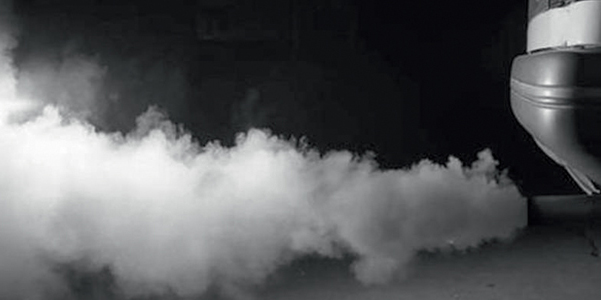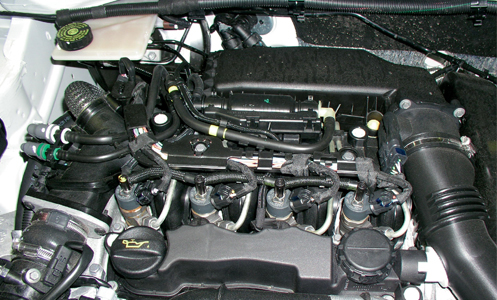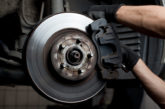
Given the self-diagnostic capability of modern diesel as well as petrol engine management systems, it iseasy for fault symptoms to be mis-interpreted as something more complex than they actually are. This is hardly surprising when you consider system adaptability, emergency running modes and various substitute functions. It can leave us wondering where to start. However, all too often, an engine management system fault is attributable to a mechanical failure which produces spurious running symptoms that don’t seem to make any sense. Under these circumstances, successful diagnostics usually boils down to basic checks and a solid understanding of system operating fundamentals.
This was the case recently when I investigated an (apparent) common rail diesel fuel system problem on a Peugeot 307 HDI for a friend who runs an independent garage. The vehicle was a model year 2005 with 2 litre engine, engine code RHR.
The symptoms were severe diesel knock when the engine was started from cold and greyish/white smoke from the exhaust. After a couple of minutes, the diesel knock subsided but the smoky exhaust continued. The injectors had been sent away to be tested and returned with no fault found. One new injector had been fitted. Despite this, the problem remained. There were no diagnostic trouble codes stored or pending in the engine ECM and the malfunction indicator lamp (MIL) was not illuminated. Due to the nature of the problem, the vehicle had been kept in overnight so that we had a fresh start under the right conditions.
System health check
After checking that the engine oil level was satisfactory, I decided to carry out my quick health check of the fuel system. This test takes just a few minutes using nothing more than the graphing function of a diagnostic scan tool to evaluate fuel rail pressure against engine speed. The purpose of the test is to establish what rail pressure the system is capable of producing during engine cranking, at engine idle speed and during a snap acceleration. The system produces a characteristic pressure waveform which is displayed nicely as a graph.
I have found this health check extremely useful for highlighting a variety of problems; from low pressure fuel supply to transfer pump failure and excessive leak back from injectors. Knowing what to expect is the key to the test.
No expensive equipment is required, just a thorough understanding of the system and how to manipulate it to conduct the required test. Based upon test results, further tests can then be carried out tailored to the system variant(whether it be metering control, two point rail control, with or without electric lift pump in tank etc).
The quick health check is also a good way of establishing a healthy common rail diesel fuel system, thereby enabling it to be quickly eliminated as the cause of the problem. In this case, my quick health check did indeed show the system to be healthy.
So what next? To answer this question, consider what makes a diesel engine tick. To increase engine speed, the system adds fuel; to reduce engine speed, the system reduces fuel; a healthy diesel engine runs with an abundance of air and uses the heat of compression to produce combustion.
Clues to a problem can be gleaned from looking at live data. But with so many different vehicle variants out there, it is a job to know exactly what to look for. It is even more difficult knowing what values to expect particularly with an unfamiliar vehicle. Again this is where a good understanding of system basics and the ability to think laterally is essential.
Injection correction
Whilst browsing through the available live data values looking for clues, I noticed four values relating to injection correction, one for each cylinder. Each of these values showed a large negative figure of between -350% and -400%.
This seemed to indicate that the engine management system was trying to subtract a significant amount of fuel from its mapped values. I suppose this could be likened to the short term fuel trim of a petrol engine management system.
The fuel correction deviation seemed abnormal and this was the clue for me that started to put the whole problem into perspective. If the system was not injecting too much fuel but instead trying to reduce fuelling, then why were we getting severe diesel knock and a smoky exhaust? The answer had to be that hydrocarbons were getting into the cylinders from another source – but where from?
By this stage, I suspected possible valve stem seals failure or a turbo problem. Given the proximity of the turbo (shoe-horned between the back of the engine and the bulkhead), access to carry out further checks on the turbo was not going to be easy. Another one of my philosophies when investigating problems is to gain as much information as possible whilst dismantling as little as possible. It is easy to end up with a pile of dismantled parts and still no answers.
The parts then have to be re-fitted which is time consuming and ultimately costly, particularly if no fault is found. The rubber induction pipe between the top of the charge air cooler and the inlet manifold was easily accessible so I unscrewed the jubilee clips and removed it to have a look inside. Not only was there excessive engine oil mist inside the pipe but the oil contained fine particles as well. A closer look inside the top of the charge air cooler revealed that it was saturated with engine oil.
From underneath the vehicle, the lower induction hose to the charge air cooler was then also disconnected. In addition to the saturated charge air cooler, a puddle of oil had accumulated in the lower pipe. This was the evidence I needed to conclude that the turbo seal had failed on the compressor side.
In summary
In summary, the common rail diesel fuel system was not at fault on this occasion. This was proved by the quick health check. The excessive diesel knock occurring for the first few minutes after a cold engine start was due to engine oil mist being inducted into the cylinders from a failed turbo seal on the compressor side. The grey/white exhaust smoke was the product of combustion of this oil mist and the engine control module was trying to compensate for this additional uncontrolled hydrocarbon intake by reducing fuelling.










